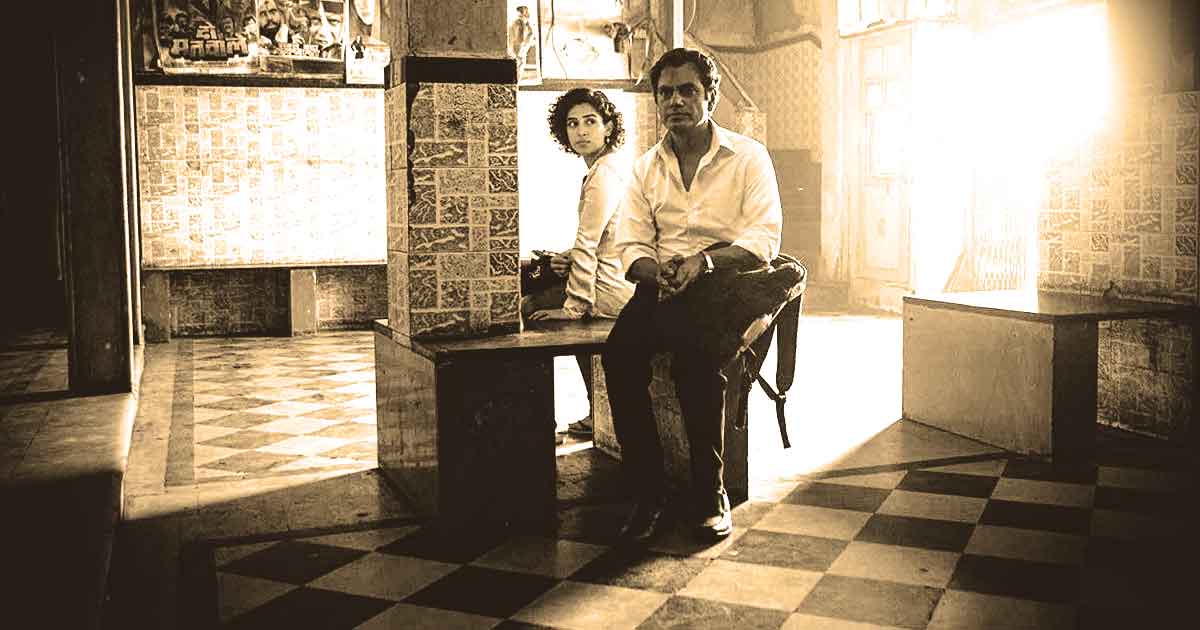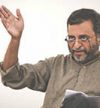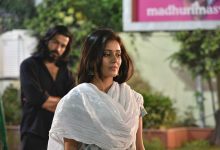The selfie has become an integral part of living today but it can be regarded as a development of the amateur family photograph brought up to date by new technology. Still, alongside technological advances are social changes and a selfie means something quite different from what family pictures once meant.
Technological advances replace and/or supplement existing human capabilities. The crane mimics and enhances the capacity of the hands to grasp and lift while the computer mimics aspects of the human mind. The camera replaces the human memory by retaining in physical form the visual experience of a moment. The earliest photographs were usually taken to mark important occasions and many of them were of people who exercised power, historical markers since even personal pictures of important people are public records. As photography became open to amateurs, people less important began to take pictures. Early Indian portraits use backdrops or try to paint over the photographic image to produce class or caste archetypes instead of individuals, e.g. Zamindar or Matriarch. As ‘commoners’ began to take pictures they used it to mark events in family history, but the events in family memory were tied up with larger history. When ‘private space’ is denoted, it implies a ‘public space’ elsewhere to which it relates, and public space is permeated by historical time.
The modern nation, as Benedict Anderson proposed (Imagined Communities: Reflections on the Origin and Spread of Nationalism), was made possible only by the arrival of the print medium, namely the novel and the newspaper. A ‘nation’ as it is understood in the modern world is not identical to a ‘country’ which merely needs to have its boundaries defined and a state ruling it but depends on a public collectively imagining themselves as constituting a community. The novel and the newspaper are essential to nationhood because they create a sense of historical time through which the imagined community is moving. In India the sense of nationhood was evidenced first in the colonial cities – especially Calcutta then the seat of British power – where printing presses first appeared.
Indian nationalism then gained ground in other cities where people could have access to novels and newspapers, both in Indian languages and English. If one attributes ‘nationalist’ feelings to heroes like Tipu or Shivaji today retrospectively, it would be inaccurate since the sense of a national community could only gain ground through the print medium, which reached people across the geographic divide and make them simultaneously feel kinship with each other. It follows from this that nationalism initially affected only the educated classes who could read the newspaper and the novel. It may also be surmised that the sense of belonging to a national community can hardly be uniform among the public. To regard only its geographic distribution, it will likely fade far away from the mainstream; those living in isolated pockets like adivasis and tribals, or those in the far corners will feel less of it.
Everyone having a vote evidently does not make all Indians participate equally in nationhood. Immanuel Wallerstein proposed that there were three effective ways in which nationhood could be inculcated in a wide public: public education through state-owned schools, compulsory military service and public functions. It may be imagined from the fact that none of the above three have prevalence/ significance in India that a strong sense of nationhood is felt by only a relatively small section of the public. If it is those who have had some education who, by and large, still remain nationhood’s prime movers, from their viewpoint it may be surmised that family pasts will be recollected as strands in national history: “That was the year in which the Quit India Movement began” or “We moved house when the anti-Hindi agitation under Lal Bahadur Shastri was under way.” My own feelings at the debacle of the Sino-Indian War (when I was eight years old) are still vivid in my memory, the sense of national betrayal widely shared. Personal or family narrative as a constituent part of national history would not have been possible without the newspaper or the novel, which together made the association – although mainstream cinema also linked personal stories to national history. Personal histories were themselves documented in people’s lives by photographs.
The selfie’s most obvious cultural precursor was the personal or family photograph. An aspect noted about the family photograph was that its visual quality did not matter. What was important was who took it, on what occasion and when; what people felt about the pictures was much more important than what they ‘meant’ individually. It was equally important that the pictures were shown to other people who could use them to picture events they were not present at, thus situating themselves within a social continuum of some sort. Social context is not often detected in them but it is covertly present in personal or family photographs. Wedding pictures (later supplanted by the video) are records of social gatherings, and implicit connections with wider events are inevitably made by those to whom they are shown. Visitors looking at pictures were a ritual that most people went through in the homes of their acquaintances.
If there is a fundamental political change the internet made, it lies in obscuring the grand narrative of history. Where the central historical events of the 20th Century (WWI & II, the rise and fall of Communism, colonial wars and former colonies becoming independent, etc.) are easy to name, it is difficult to do likewise with this century and the presence of the internet makes the task more confusing. In India, history was carried forward by a relatively small number of newspapers and writers, and citizens located themselves in national life through their reportage and opinions. The social media and ‘fake news’ has compounded the effect of the internet; current history no longer exists as fact.
Communication through social networking websites differs from email in important ways. Email replicates letter writing in being considered communication – thoughts are generally fully articulated as they are in letters, and the attachment – a document or a picture – is like something enclosed with the letter. Communication on Facebook is different and imitates an actual conversation; people can say unconsidered things without much thought, retract them subsequently as they do in conversation. A thoughtless insult or swear word is difficult to imagine in a letter but natural on Facebook. Verbal conversation is not communication in the way a letter is, and where a letter might reflect upon life, conversation is integral to it. Social networking, though it can be used for considered communication like email, is hence more a substitute for living physically in the world, and a selfie like a person’s presence. Unlike a photograph, which is a record, a selfie does not replace personal memory.
The social network, tweets and selfies are vehicles for activism of all kinds and often the bearers of strong nationalist sentiments, and here we have a seeming contradiction. Nationhood depends upon the sense of a shared past and, hence, personal memory tied to a common past, but social networking and selfies are largely tied to immediate impulses. Politicians use social networking in a big way and put out selfies. The apparent purpose is to keep their constituencies in a state of political excitement and influence sentiments. But if tweets and posts on Facebook awaken nationalist sentiments, how is the sense of nationhood created by the newspaper and the novel different from the nationalist sentiments awakened by a tweet, or a selfie with a political leader who commands a large following?
The nation as created by the print medium enabled people across a wide geographical territory to experience historical time together, thus imagining themselves a community, and created nationalism based on inclusion rather than exclusion – because it nurtured kinships rather than antagonisms. This is substantiated by the general goodwill Indians felt even towards the departing British, despite the latter’s horrendous doings in India. The nationalism fostered by Facebook, the tweet and the selfie is apparently of a different order. It would take more investigation to establish this but the stimuli to which tweet/selfie nationalism responds are similar to technologically mediated sporting events that also awaken fierce loyalties and antagonisms, explained as ‘ritual participation’ by media pundits.
An individual’s desire for cultural identity can be a possible motivation for being a sports fan and just as sports fans actively ritualize their sports consumption activities to acquire and maintain cultural identities, so do ‘political fans’ through emblems and rallies. The way television and social media generate political enthusiasm it is not different from the way the telecasting of an IPL match generates sporting excitement. Sporting rivalries are violent and football fan violence often leads to deaths, as with political rivalries. Political players are also conducting themselves as gladiators might, and bets are placed on elections. The ‘players’ in the ‘arena’ are conscious of the spectators whose hopes they represent. Defections are like the transfer of sporting stars from one club to another. Most importantly, ‘ideology’ in political contests today is increasingly like sport slogans repeated time and again to announce affinity with one group or another; the paucity of debate among ‘ideologies’ substantiates it. The difference may be that in sport mobilising a fan following depends upon performance and is secondary to it, while in the political arena mobilising a fan following is performance.
The question that one must evidently put at the conclusion of this article pertains to the relationship between social networking and what is happening in politics, which is a contest over the nation. My proposition here is that the ‘sporting’ excitement generated in the political arena would not have been possible without the immediacy, the sense of living only in the present provided by social media platforms. Where being a ‘citizen’ meant locating oneself in the continuum of national history, being nationalistic (rather than a ‘citizen’) means becoming a fan of a political group; there is no evidence that one group is more ‘for the nation’ than another – although each group imagines the nation differently. Since the nation is a community nurtured over generations of history and depends on the sense of nationhood gradually permeating every part of the public, the current technology mediated excitement over conflicting approaches to the Indian nation trivializes it and throws doubt on its stability as a cherished notion.





Leave a Reply
You must be logged in to post a comment.